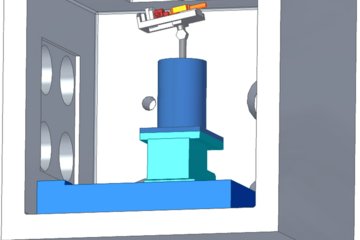All genres
161.
Poster
Sour corrosion – Investigation of anodic iron sulfide layer growth in saturated H2S saline solutions. Gordon Research Seminar-Aqueous Corrosion, New London, NH, USA (2014)
162.
Poster
Grain boundary chemistry in nickel alloys applied in 700°C coal-power plant. High Temperature Corrosion - Gordon Research Seminar , New London, NH, USA (2013)
163.
Poster
Grain boundary chemistry in nickel alloys applied in 700°C coal-power plant. High Temperature Corrosion - Gordon Research Conference, New London, NH, USA (2013)
164.
Poster
Grain boundary chemistry in nickel alloys applied in 700°C coal-power plant. DPG-Frühjahrstagung 2013, Regensburg, Germany (2013)
165.
Poster
Grain boundary chemistry in nickel alloys applied in 700°C coal-power plant. DPG-Frühjahrstagung 2013 , Regensburg, Germany (2013)
166.
Poster
Grain boundary chemistry in nickel alloys applied in 700°C coal-power plant. High Temperature Corrosion - Gordon Research Seminar , New London, NH, USA (2013)
167.
Poster
Grain boundary chemistry in nickel alloys applied in 700°C coal-power plant. High Temperature Corrosion - Gordon Research Conference, New London, NH, USA (2013)
168.
Poster
Phase composition and internal stress development during the oxidation of iron aluminides. ICRS-8, Denver, CO, USA (2008)
169.
Poster
Short-term oxidation of Fe–Al: Effect of ternary elements and Al content. 4th Discussion Meeting on the Development of Innovative Iron Aluminium Alloys, Interlaken, Switzerland (2007)
170.
Poster
Residual Stresses and Phase Composition in Oxide Layers grown on Iron Aluminides. MECASENS IV, Wien, Austria (2007)
171.
Poster
Preparation and electrochemical characterization by SDC of thin Cr2O3, Fe2O3 and (Cr, Fe)2O3 films thermally grown on Pt substrates. 6th International Symposium on Electrochemical Micro & Nanosystem Technologies, Bonn, Germany (2006)
172.
Poster
Carburisation of Fe–Al alloys at 1000°C in flowing CO-H2-H2O gas mixture. 3rd Discussion Meeting on the Development of Innovative Iron Aluminium Alloys, Mettmann, Germany (2006)
173.
Poster
Oxidation resistance of alloys for flexible tubes in dry air and KCl containing atmospheres. Eurocorr 2005, Lisbon, Portugal (2005)
174.
Poster
Model oxide films- A novel approach to study the chemical breakdown of native HT-oxide barriers. Gordon Research Conference - High Temperature Corrosion, New London, NH, USA (2005)
175.
Poster
Role of B and Mn segregation on the surface chemistry of Fe–B–Mn - model alloys. Gordon Research Conference - High Temperature Corrosion, New London, NH, USA (2005)
176.
Poster
Studies on the nucleation and growth of oxide films. Gordon Research Conference – High Temperature Corrosion, New London, NH, USA (2005)
177.
Poster
Initial oxidation of Fe-Cr alloys: In situ STM amd ex-situ SEM studies. 6th International Conference on the Microscopy of Oxidation, Birmingham, UK (2005)
178.
Poster
Local reactions of KCl particles with Fe, Ni and Cr surfaces. EFC Workshop: Novel approaches to the improvement of high temperature corrosion resistance, DECHEMA, Frankfurt, Germany (2004)
179.
Poster
High temperature corrosion of metallic materials in simulated waste incineration conditions at 300-600 °C. EFC Workshop: Novel approaches to the improvement of high temperature corrosion resistance, DECHEMA, Frankfurt, Germany (2004)
180.
Poster
Al2O3 growth on Fe–Al intermetallic phases. ANKA Users Meeting, Karlsruhe, Germany (2004)











